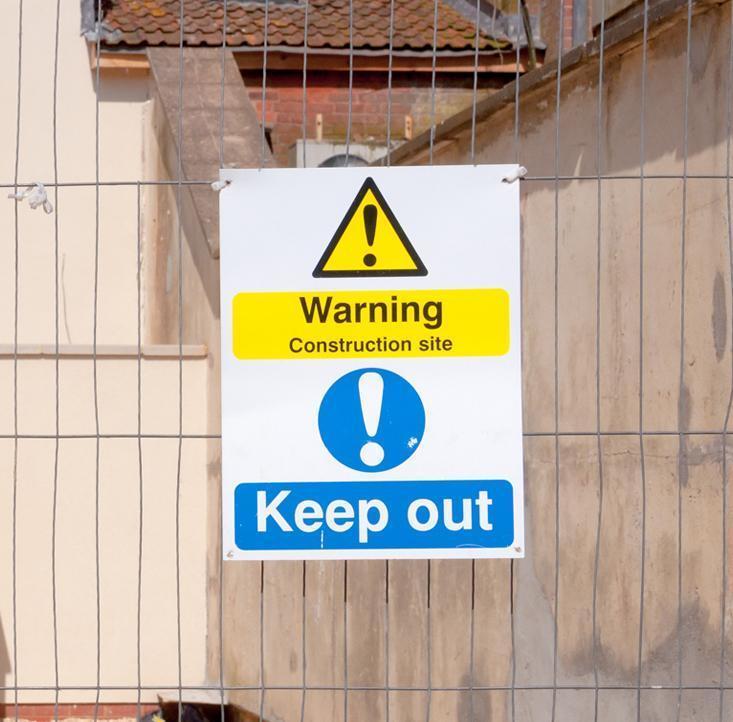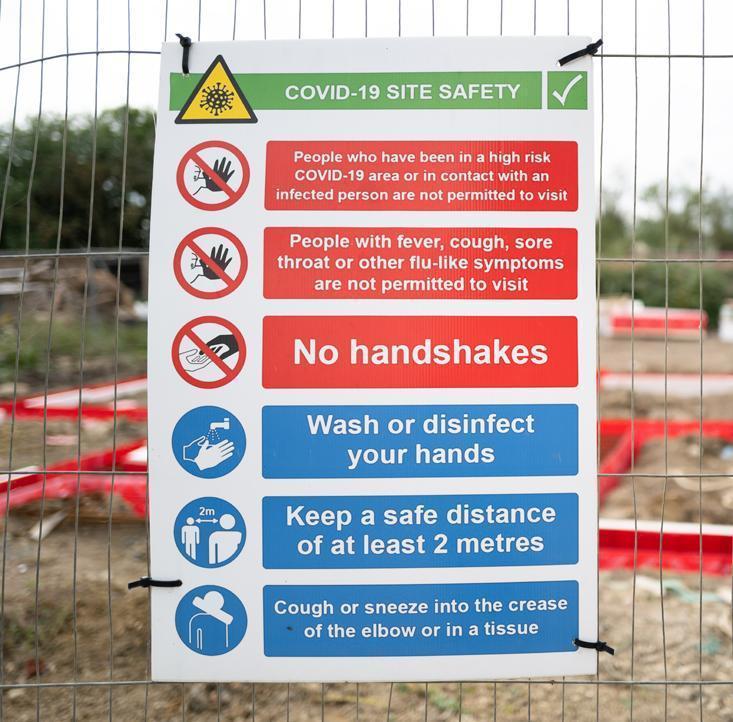
Clear and effective site safety communication is not just a legal requirement it’s a vital part of ensuring every worker, visitor, and contractor stays safe on your construction site. Despite strict regulations, many sites still experience injuries or near-misses due to unclear messages, missing signs, or confusing instructions. So, how can you make sure your site safety information is easily understood and followed by everyone?
In this blog, we’ll explore why clear safety communication matters, what elements make it effective, and how creative methods like hoarding panels and construction safety signs can play a crucial role in keeping your site safe.
Why Clear Site Safety Communication Matters
When safety information is poorly communicated, the risks rise sharply. According to the Health and Safety Executive (HSE), many construction site accidents occur because workers didn’t fully understand instructions or safety rules. On a busy construction site, there are people from different backgrounds, some with limited English, and others who may be unfamiliar with the site layout.
Clear communication ensures everyone knows where they can and cannot go, what equipment requires protective gear, and how to behave in hazardous zones. It helps avoid injuries, prevents property damage, and ensures your site complies with UK health and safety laws.
Key Elements of Clear Safety Communication
To make sure your safety messages are effective, focus on these core principles:
1. Keep the Language Simple
Avoid technical jargon or long explanations. Use plain English that any worker can understand. Instead of saying “authorised personnel only beyond this threshold,” say “Only staff allowed past this point.”
2. Use Strong Visuals
Pictures speak louder than words—especially on busy sites. Construction safety signs with symbols and colours are more likely to catch attention. For example, a red circle with a white line universally signals “Do Not Enter.” Bright yellow signs alert people to hazards like electrical risks or heavy machinery.
3. Be Consistent
Use the same wording, colours, and symbols throughout your site. A warning sign in one area should match those in others. This builds recognition and trust in the signage system.
4. Place Signs Strategically
No matter how well-designed your signs are, they won’t help if people don’t see them. Place them at eye level, near entrances, along paths, and at decision points—where people have to make choices about where to go or what to do.
Effective Tools and Formats to Use
There are many ways to get safety messages across—some traditional, some more modern. Combining these methods gives your site the best chance of keeping everyone informed.
Construction Safety Signs
These remain one of the most important tools. Use them to mark hazards, restricted areas, mandatory PPE (like hard hats), and emergency exits. Make sure they meet UK safety standards such as BS ISO 7010, which uses internationally recognised symbols.
Hoarding Panels
Hoarding panels are often used to fence off a construction site, but they also offer a huge opportunity to display safety information. These panels can be printed with clear instructions, directional signs, or emergency contact details. They’re large, visible, and double up as branding if needed.
Toolbox Talks
A toolbox talk is a quick safety briefing given at the start of a shift. These short sessions remind workers about current risks and help reinforce rules. It’s also a chance to answer any questions and clarify new procedures.
Digital Boards and Screens
If your site uses digital tools, consider setting up safety display screens at entry points or staff rest areas. These can show weather alerts, equipment updates, or rule changes.
Printed Handouts and Posters
Laminated posters or safety cards can be placed in break rooms, toilets, or near entrances. These are especially helpful for emergency procedures, like fire evacuation routes or first aid contact details.
Creative Ways to Improve Engagement
Making safety messages more engaging can help ensure they’re read and remembered. Here are a few simple but effective ideas:
Reward Good Practice
Set up a simple reward scheme to encourage workers who consistently follow safety rules. This can improve morale and boost attention to detail.
Infographics and Illustrations
Visual explanations—like diagrams showing how to wear harnesses correctly or how to lift heavy items—are often more effective than text-heavy signs.
Use Multiple Languages
If your team includes workers from abroad, consider printing key signs in their native languages alongside English. This shows respect and reduces the chance of misunderstandings.
Common Mistakes to Avoid
Even with the best intentions, some communication methods fail because of common errors. Here are a few to watch out for:
Too Much Information at Once
If a sign has too much text or too many messages, people are likely to skip it. Keep your safety messages short and focused on one point per sign.
Inconsistent Messages
Using different signs, colours, or messages for the same instruction can confuse people. For example, having one “No Entry” sign in red and another in blue might lead workers to question which one to follow.
Lack of Feedback
Your communication should go both ways. Workers should be encouraged to ask questions, report unclear signage, or suggest improvements.
Example Scenario: A Site That Got It Right
One construction company in Manchester recently improved safety on their site by redesigning all their safety signage and hoarding panels. They worked with a specialist sign company to create clear, consistent, colour-coded signs in English and Polish. They also held weekly toolbox talks to go over new hazards and updated procedures. As a result, the number of reported near-misses dropped by over 40% in six months.
Disclaimer: This case study is for illustrative purposes only. Results may vary depending on individual site conditions and safety practices.
Final Thoughts
Clear site safety communication is more than just putting up signs—it’s about building a system that keeps everyone informed daily. From construction safety signs to hoarding panels, messages should be simple, consistent, and visible in key locations. While every site is unique, the foundations of good communication—clarity, visibility, and engagement—stay the same. Enhancing your safety signage can lead to a safer, more efficient site. For tailored signage solutions that meet current health and safety standards, trust Board Printing Company to support your project from planning through to completion.

